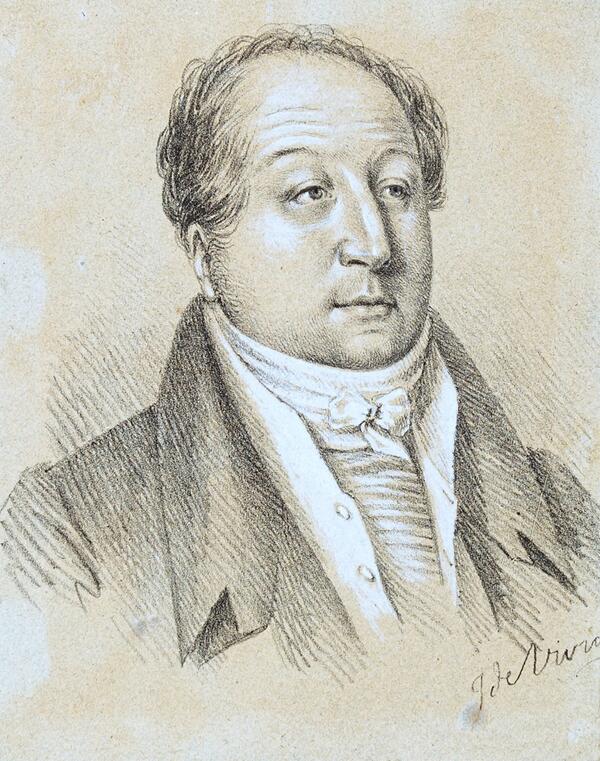The exhibition presents a portrait of Alexander Sergeyevich Pushkin, created in Moscow in late 1826 — early 1827 by the French artist Joseph Eustache Vivien de Châteaubrun. This intimate half-length portrait was made in Italian pencil (black pencil) with the addition of whitewash. The artist depicted Pushkin with a subtle half-smile and an attentive, intelligent gaze, which reveals the hidden thoughts of a man who knows something significant about himself and about life itself.
The portrait was created in September 1826, shortly after the poet’s return to Moscow from his exile in Mikhaylovskoye. Pushkin was received at the Kremlin Palace by the newly crowned Emperor Nicholas I. The poet was welcomed with enthusiasm not only by his small circle of friends, but also by high-ranking officials, at balls, and at social gatherings, where he recited poems written during his time in Mikhaylovskoye, including “Boris Godunov”.
Along with his young friends Dmitry Venevitinov, Aleksey Khomyakov, Vladimir Odoyevsky and others, he decided to take part in the publication of the “Moskovsky Vestnik” (Moscow Herald) magazine. Although freed by the tsar from civil censorship, Pushkin nevertheless found himself in another kind of captivity: he was forced to accept royal censorship, a burden that would continue to weigh on him until the end of his life.
Pushkin commissioned the artist to make two copies of the portrait. The poet gave one copy to his colleague and friend Yevgeny Baratynsky. Pushkin gifted the second copy to his friends, the Osipov-Wulf family, who owned the Trigorskoye estate in Pskov Governorate, next to Pushkin’s Mikhaylovskoye. According to family legend, the poet presented this portrait to Maria Ivanovna Osipova — at that time a little girl, the youngest daughter of Praskovya Alexandrovna Osipova-Wulf. In 1880, the portrait from Trigorskoye was on display at the Pushkin Exhibition.
The catalog stated,


